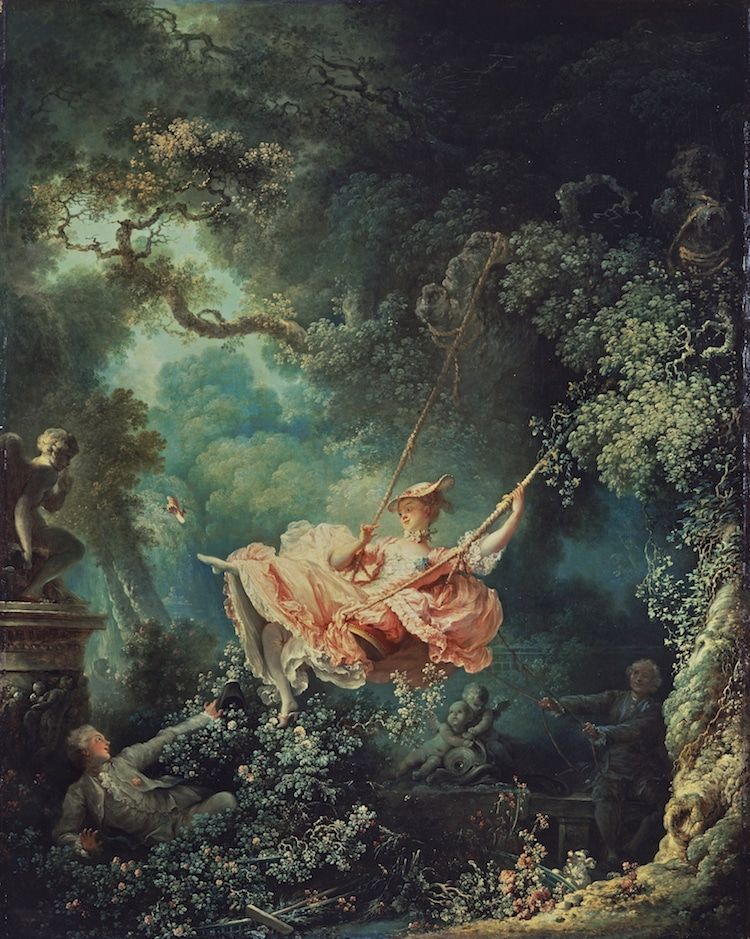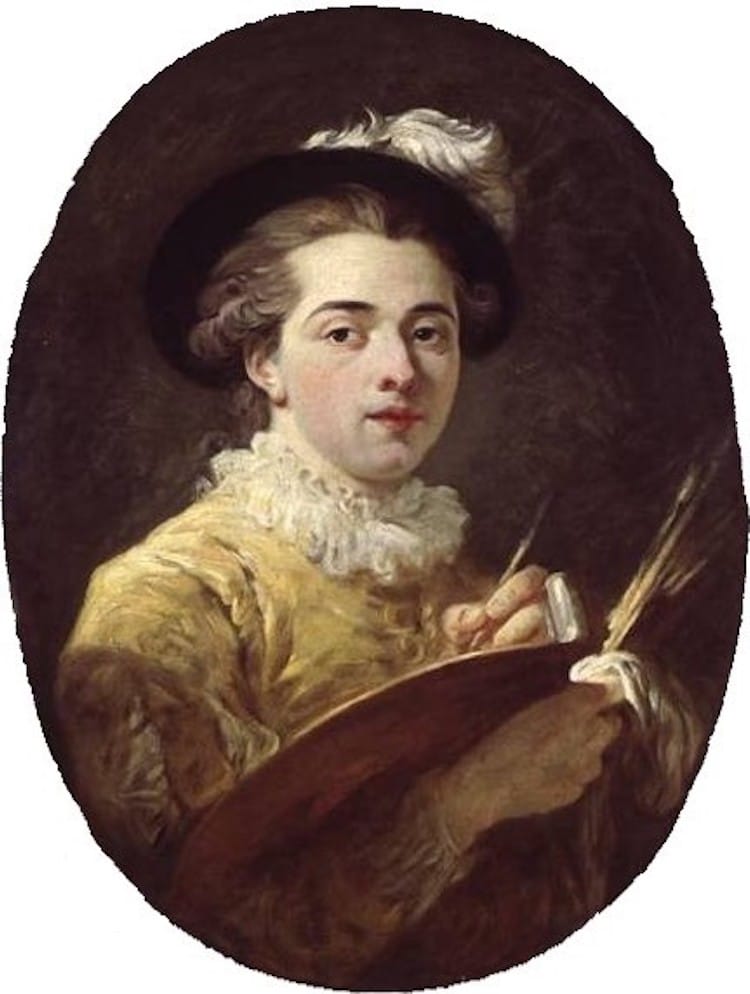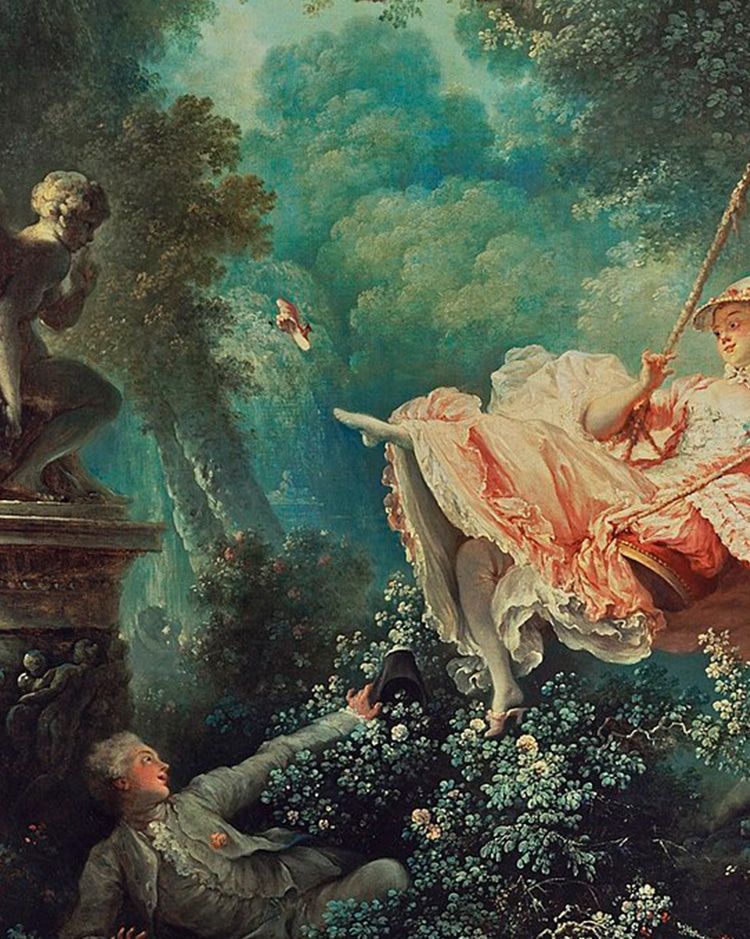
Masterpiece
This stunning masterpiece involves a woman swinging between two gentlemen who are clearly smitten with her looks – or something more.
The backdrop of the painting is a beautiful garden with a trellis in the background, ivy growing everywhere, and tall trees providing shade to the three principal actors in this piece.
If you were to see this painting for the first time, then the impression you might have of it is that the artist depicts love at first sight.
When you study the image with more intensity, you’ll discover that multiple layers of symbolism are found throughout the piece.
“The Swing” was a commissioned piece for the Baron de Saint-Julien.
It is often considered to be Fragonard’s best work.

Fragonard Often Painted Scenes of Veiled Hedonism
The Baron contacted Fragonard to paint “The Swing” because he wanted to have a portrait of his mistress.
He was quite clear about the lustful intentions of the work, asking that the woman get pushed on a swing by a bishop when directing the structure of the art.
Then he wanted Fragonard to paint him in the piece looking up the dress of his mistress.
Most artists in the late 18th century would shy away from such worldly instructions, but Fragonard wasn’t your typical artist.
His genre was often characterized by veiled hedonism and merriment, so he happily took the Baron’s money and got to work.
When he delivered the piece, there was only one change made to the original instructions.
Instead of including a bishop, he placed the husband of the mistress in the image to push her on the swing.
The painting is still a conventional symbol of infidelity.
Even the statue in the art, a representation of Cupid, seems to know this, placing a hand to its mouth as if to say that this moment is a secret that everyone should keep quiet.
The lady on the swing casually kicks off her slipper as if to say that she isn’t listening to anything being said.
Some suggest that the representation of the Baron is extending a phallic arm.
The real question is this: what is he doing with his hat?





